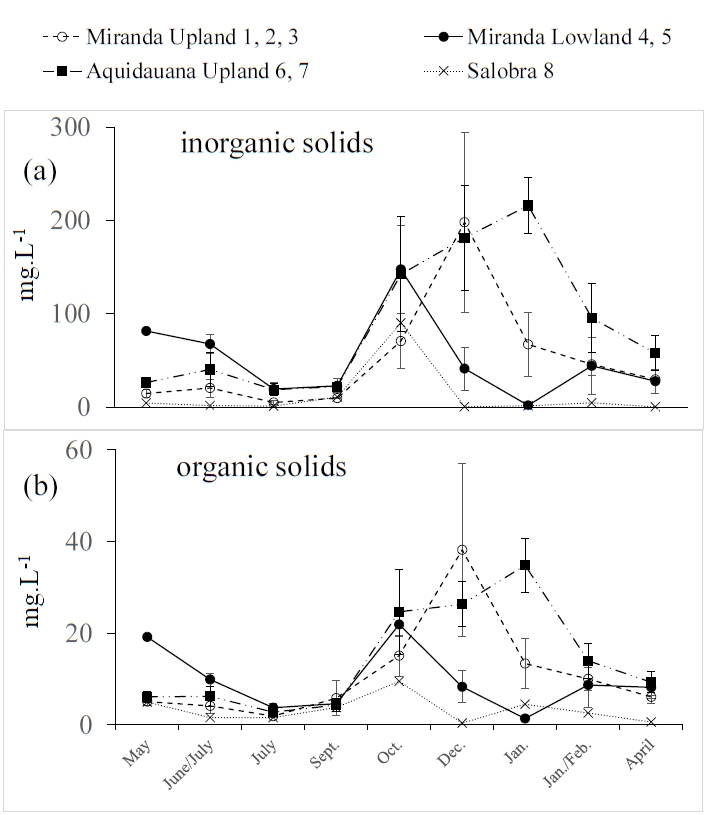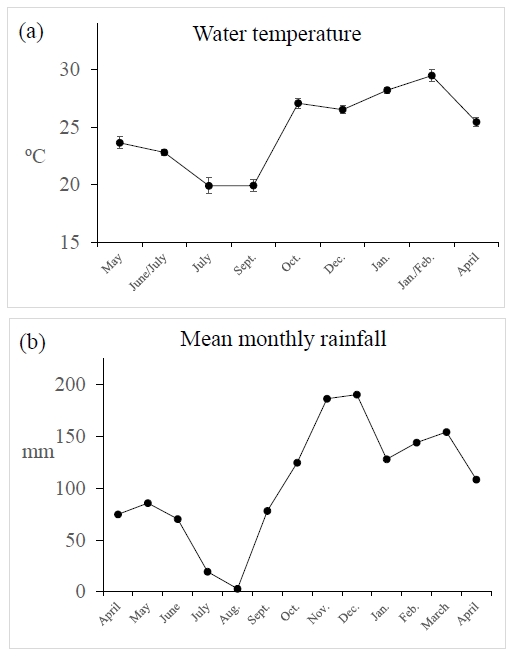Abstract:
Aim
Knowledge of the factors influencing the biomass of phytoplankton in rivers is important with reference to the characterization of water quality and predicting the effects of environmental change on such ecosystems. The present study quantified the concentrations of chlorophyll-a in the water column of the Miranda River Basin, located in western Brazil, contributing to form the Pantanal Wetland, and attempted to identify the primary environmental influences on the phytoplankton biomass.
Methods
Temperature, depth, current speed, turbidity, Secchi transparency and concentrations of nutrients, suspended solids and chlorophyll-a were measured at approximate monthly intervals during the course of a year, at five upland and three lowland sites. Relationships between chlorophyll-a and nutrient concentrations, travel times and light availability were examined.
Results
Nutrient levels were generally low, being oligo- to mesotrophic. High levels of suspended solids were recorded (up to approximately 250 mg.L-1), especially in the rainy season at the upland sites. The latter showed low chlorophyll-a concentrations, while lowland sites, with the exception of one, showed two peaks, one in winter (dry season) and the other in summer (wet season), of 4.9 and 2.4µg.L-1, respectively, coincident with reduced concentrations of suspended solids.
Conclusions
The low nutrient levels recorded may have been due to the main land use being cattle rearing. The high solids concentrations found may have been due to the degradation of native vegetation, especially riparian, that has occurred over the past decades. Travel times of approximately three to four days may have been a factor in retarding algal abundance in the upland sites, as opposed to approximately ten days in the lowland sites, where light limitation may have been a factor reducing algal growth.
Keywords:
land use; erosion; water quality; Pantanal; algae

 Thumbnail
Thumbnail
 Thumbnail
Thumbnail
 Thumbnail
Thumbnail
 Thumbnail
Thumbnail
 Thumbnail
Thumbnail
 Thumbnail
Thumbnail
 Thumbnail
Thumbnail
 Thumbnail
Thumbnail
 Thumbnail
Thumbnail








